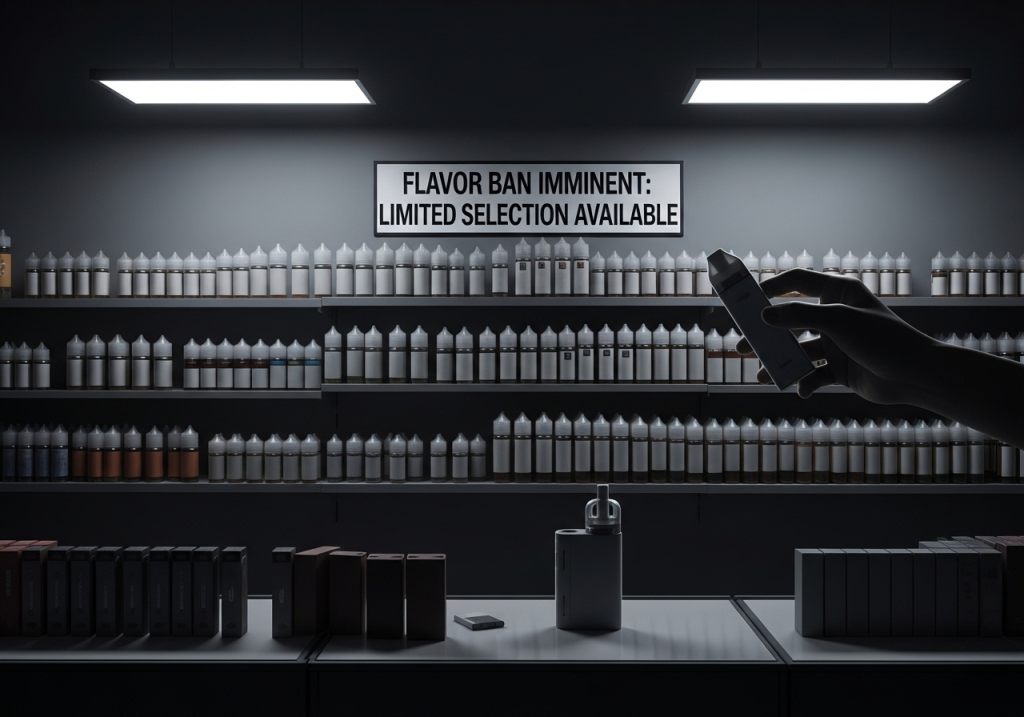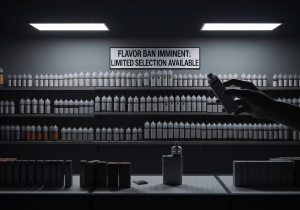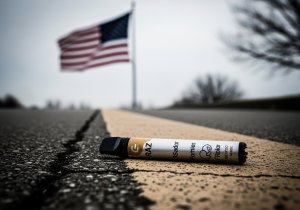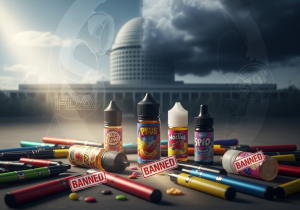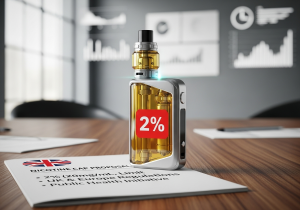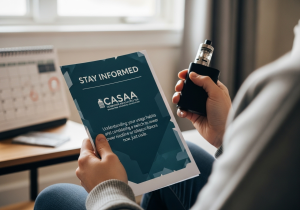You hear whispers and headlines about upcoming vape bans and new rules. You start to worry if the Raz vape you enjoy today will even be available to purchase tomorrow.
Future regulations could significantly change the vaping landscape through flavor bans, nicotine strength limits, and stricter rules on disposable products. For Raz users, this might mean fewer flavor choices and potentially different product formulations in the coming years.
This topic is constantly on my mind, not just as a manufacturer, but as someone who partners with people in the industry. My contact in the U.S., Matt, calls me about this regularly. He says, "Eric, my company’s entire purchasing strategy depends on what the FDA does next. We need to be prepared." He’s right. These aren’t abstract legal discussions; they are potential changes that will directly impact what products I can legally manufacture and what you, the end user, can legally buy. Let’s break down the most likely scenarios and what they could mean for you.
Will Disposable Vapes Be Banned Altogether?
You see news about certain cities or states banning disposables, and you wonder if a nationwide ban is coming. You’re concerned that the convenience you rely on might be taken away completely.
A complete nationwide ban on all disposable vapes is unlikely in the immediate future, but it is a possibility. More likely are state-by-state restrictions or stricter FDA enforcement that could remove many brands, including some Raz products, from the market.
Diving Deeper: The Regulatory Battle Over Disposables
The conversation around banning disposable vapes is driven primarily by concerns over youth vaping and environmental waste. Regulators see these products as particularly appealing to underage users due to their ease of use, low entry cost, and bright packaging. From my manufacturing perspective in Shenzhen, we’re acutely aware of this.
Here’s how the situation is unfolding:
- The PMTA Process: The FDA requires all vape products to have a Premarket Tobacco Product Application (PMTA) approved to be legally sold. So far, very few have been granted, and almost no flavored disposable products have passed this process. The FDA could simply ramp up enforcement, issuing warning letters and fines to companies selling non-compliant products, effectively removing them from shelves.
- State-Level Action: We are seeing a patchwork of laws. Some states, like California and Massachusetts, have already implemented flavor bans that heavily impact disposables. Other states are considering similar legislation. This creates a confusing landscape where a product is legal in one state but illegal right across the border.
- Federal Pressure: There is ongoing pressure on the FDA from lawmakers and public health groups to take more decisive action against disposable vapes.
For a Raz user, this means the future is uncertain. A federal ban is a distant threat, but the risk of your state or even your city banning disposables is very real and growing.
Could My Favorite Raz Vape Flavors Disappear?
You have a few go-to flavors like Night Crawler or Watermelon Ice. The thought of them being banned is frustrating, leaving you with bland options you don’t enjoy.
Yes, this is one of the most probable outcomes. The FDA has consistently targeted non-tobacco and non-menthol flavors. Any future regulation will almost certainly restrict or completely ban the fruit, candy, and dessert flavors that are most popular.
Diving Deeper: The War on Flavors
The argument from regulators is that flavors like Blue Razz Ice and Georgia Peach are a primary driver of youth vaping. While the industry argues these flavors are crucial for helping adult smokers switch, the regulatory tide is moving firmly against them.
Here’s what that means for your favorite flavor:
- The Tobacco/Menthol Exception: In most proposed regulations, only tobacco and sometimes menthol flavors are spared. The logic is that these flavors are less appealing to new users but still provide a satisfying alternative for former smokers. This is why you see many pod-based systems (like Juul) now only offering these two options.
- How Flavor Ban Affects Raz: Since the vast majority of our most popular flavors—like Tiffany (Kiwi Watermelon) and Vicky (Pink Lemonade)—fall into the "flavored" category, they would be directly targeted by such a ban. We would be legally unable to export these flavors to the U.S. market.
- The Manufacturing Pivot: As a manufacturer, this forces us to pivot. We are constantly experimenting with complex tobacco blends and new kinds of mint/menthol profiles that might be compliant. However, the reality is that the vibrant, fruity experience many users love would likely be a thing of the past.
The loss of flavors is not just a possibility; it is the most actively pursued regulatory action right now.
Might Future Regulations Limit Nicotine Strength?
You use a standard 5% nicotine vape because it effectively satisfies your cravings. You worry that new rules could lower this, making vaping less effective and potentially pushing you back to cigarettes.
Yes, limiting nicotine strength is a key proposal in many regulatory discussions. The most common proposal is to cap nicotine levels at 2% (20mg/mL), similar to regulations already in place in the UK and Europe.
Diving Deeper: The Global Trend Toward Nicotine Caps
The move to cap nicotine is based on the idea that lower levels are less addictive and therefore less risky, especially for young people who might experiment with vaping. This isn’t a new idea; it’s the standard across Europe.
Here’s the breakdown of what a nicotine cap could mean:
| Current U.S. Standard (Raz) | Proposed Regulation Cap | Potential Impact on Users |
|---|---|---|
| 5% (50mg/mL) | 2% (20mg/mL) | Less Satisfaction: Heavy smokers may find it doesn’t curb cravings. |
| High nicotine "hit" | Milder vapor experience | Increased Consumption: Users might vape more to get the same effect. |
| Effective for heavy smokers | Less effective alternative | Potential return to smoking: Some might find cigarettes more satisfying. |
For my team and me, this is a formulation issue. We can easily produce e-liquid at 2% nicotine. We already do it for our European clients. The real challenge is for the user. A lower nicotine level changes the entire experience. It delivers a much weaker throat hit and provides less satisfaction per puff. Heavy smokers who successfully switched using 5% nicotine might find a 2% product completely inadequate.
How Can I Stay Informed and Prepared for Changes?
You feel powerless against these potential changes. You want to know what’s happening and what you can do to prepare, instead of just waking up one day to empty shelves.
Stay informed by following reputable advocacy groups like the Consumer Advocates for Smoke-Free Alternatives Association (CASAA). You can prepare by understanding your usage habits and considering a switch to lower nicotine or tobacco flavors now, just in case.
![]()
Diving Deeper: Taking a Proactive Stance
While you can’t stop federal regulations on your own, you can avoid being caught off guard. Being proactive is your best defense.
- Follow the Right Sources: Don’t rely on social media rumors. Follow organizations like CASAA. They provide accurate, up-to-date information on pending legislation at both the state and federal levels. They also offer calls to action, like contacting your local representatives, which allows your voice to be heard.
- Understand Your Local Laws: Regulations are happening much faster at the city and state level. Search for "[Your State] vape laws" regularly to see if any new bills are being proposed. This is where you’re most likely to see the first changes.
- Experiment and Adapt: If you are concerned about a flavor ban[^1], start trying some of the tobacco or mint-based flavors that are more likely to remain legal. If you’re worried about a nicotine cap, see if you can find a lower-nicotine disposable[^2] and test if it works for you. Finding alternatives now, before you are forced to, will make any transition much smoother. Being prepared means you won’t be left without a viable option.
Conclusion
The future of vaping regulation is uncertain but trending toward more restrictions. Staying informed about potential flavor bans and nicotine caps will help you adapt to whatever changes may come for Raz users.
Related
[^1]: Understanding the implications of a flavor ban can help you make informed choices about your vaping options.
[^2]: Exploring the differences can guide you in selecting the best vaping option that suits your needs.
